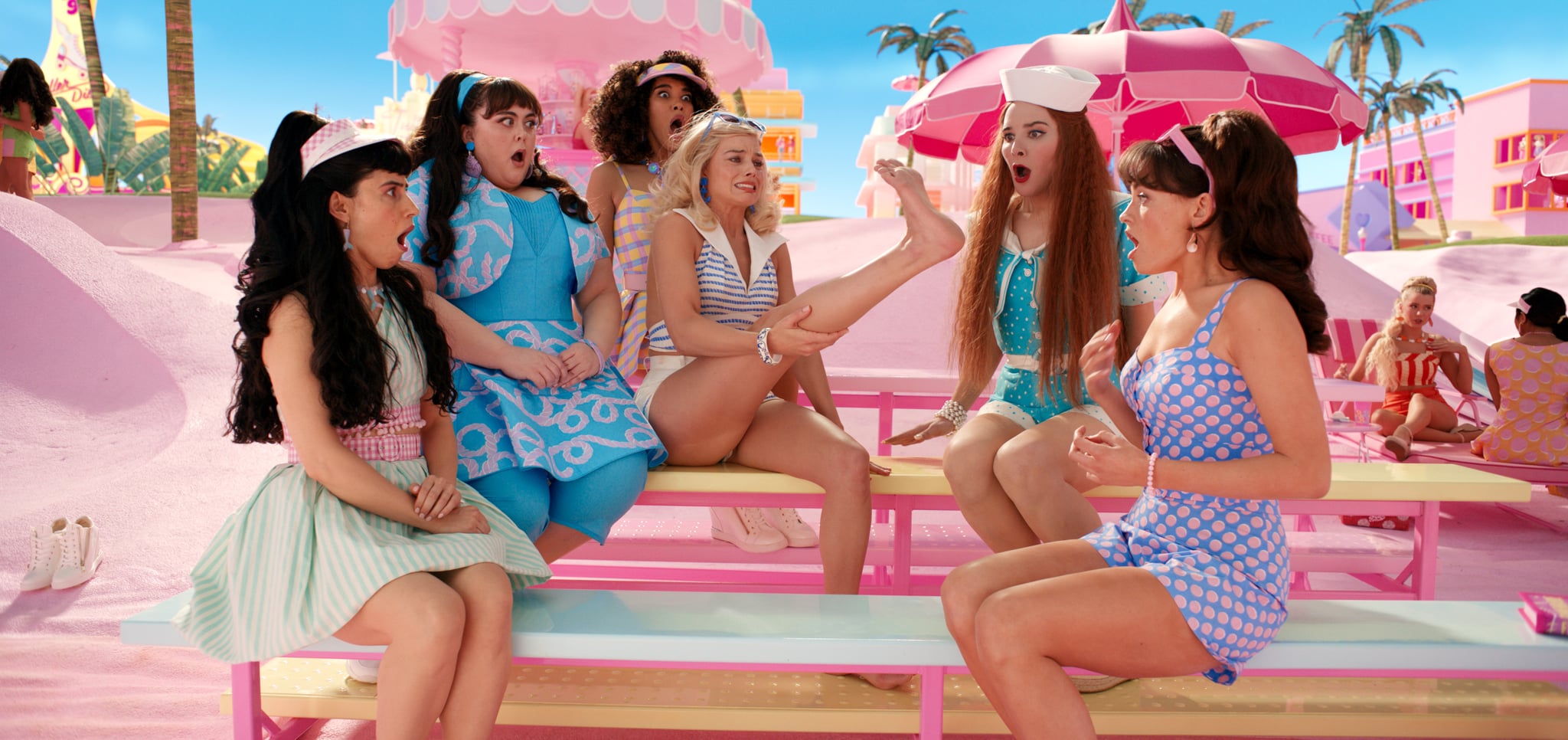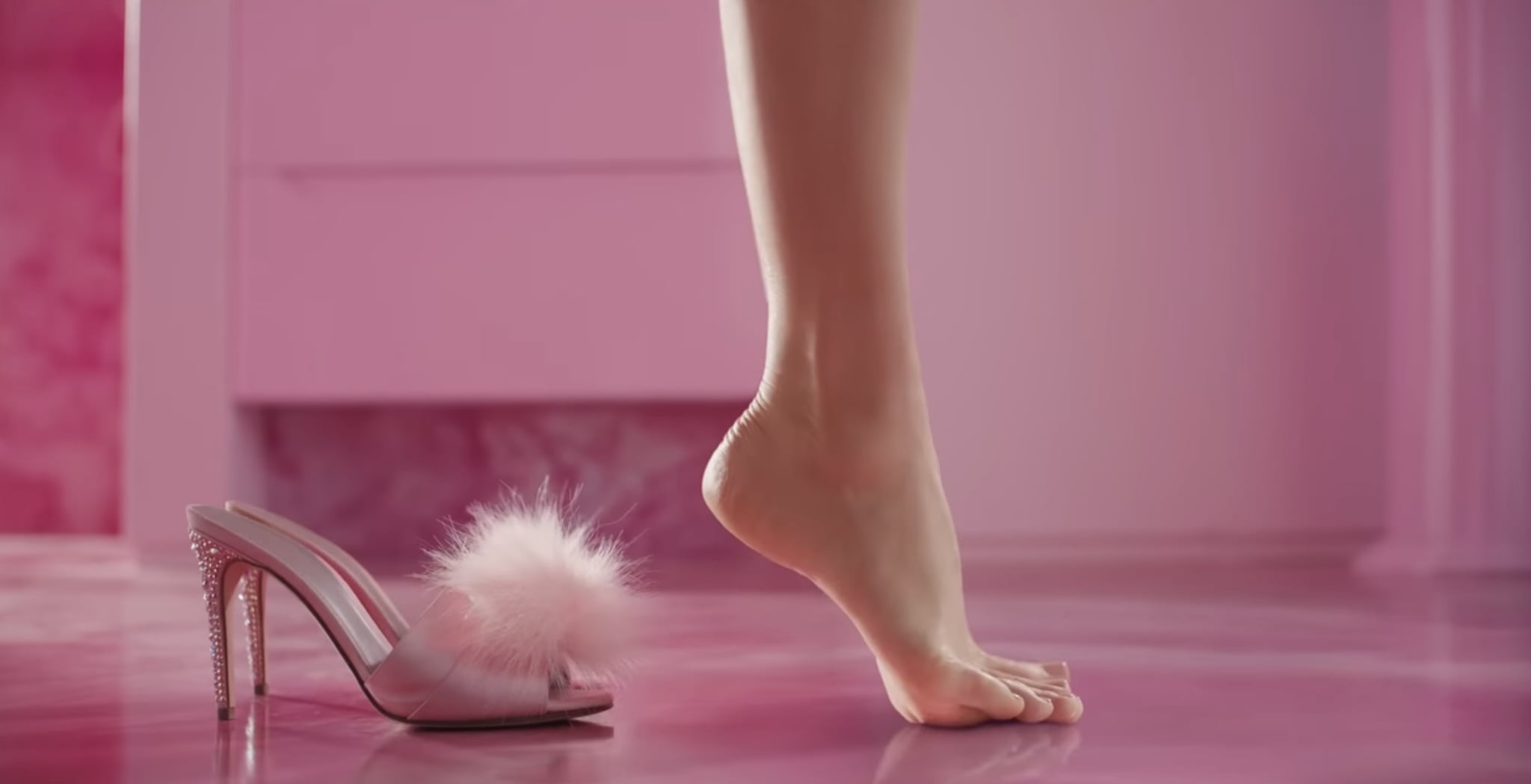When the second “Barbie” teaser dropped, fans went absolutely feral for the opening shot: a close-up of Barbie’s iconically arched foot stepping out of a pink, furry stiletto. “I need to know everything about this shot. How many takes, if she held onto something, was she harnessed, is the landing mark sticky, are they her feet, who did the pedicure, really just a documentary on this shot,” Chrissy Teigen tweeted, capturing the general frenzy over the scene.
Then came the imitators. Teigen herself was one of the millions to try out the “Barbie Foot Challenge,” which has amassed more than 42 million views on TikTok.
But walking and living with an extremely high arch isn’t as picture perfect as it’s made to look. For starters, “no one actually has feet perfectly shaped to fit the form of a high heel,” Chanel Perkins, DPM, a Texas-based, double-board-certified podiatrist, tells POPSUGAR. And for those who come close to it, life can be pretty uncomfortable.
In fact, there’s a condition known as cavus foot, which is essentially a high-arch foot even when standing that “somewhat mimics Barbie‘s famous foot type,” according to Dr. Perkins. Many people are born with high arches, so genetics can definitely play a role in whether you develop cavus foot, per Cleveland Clinic. For others, cavus foot may be a symptom of another condition such as stroke, cerebral palsy, spina bifida, and more. Cavus feet can cause other issues, from hammertoes to instability when walking and calluses on the balls, heels, or sides of the foot. Some people with cavus foot may need orthotics, bracing, night splints, and even surgery to address their symptoms if they’re severe enough, according to the Cleveland Clinic.
Having permanently high arches can also lead to other health complications like plantar fasciitis and metatarsalgia, which is characterized by sharp, aching, or burning pain in the ball of your feet.
“Putting your foot in an unnatural position for an extended period of time increases your risk of muscle imbalance, ankle sprains, tipping, foot pain, calf pain, and corn buildup.”
Even when temporarily arching your feet, like in the case of the Barbie Foot Challenge, you run the risk of injury — particularly if you’re doing it over and over again or keeping your foot in that position for a prolonged period of time, such as when you’re wearing high heels. “Putting your foot in an unnatural position for an extended period of time increases your risk of muscle imbalance, ankle sprains, tipping, foot pain, calf pain, and corn buildup,” says London-based celebrity podiatrist Marion Yau.
“Pain in the toes and the ball of the feet are likely to occur simply from the forward shift of gravity needed to attempt the Barbie challenge,” Dr. Perkins adds.
Not to mention, there’s the risk of perpetuating unrealistic beauty standards. “When one balances on their toes, as is the case in this challenge, the legs immediately elongate to give a taller appearance; better posture is also acquired; the calf muscles become more defined, and there is also a temporary butt lift that occurs as well,” Dr. Perkins says. But none of that is maintained when you resume the regular positioning of your foot. “Once your heels come back down to earth, you’re back to your natural self again,” Dr. Perkins says.

Yau also warns that there has already been an increase in the “Cinderella foot” procedure in recent years, in which the foot is surgically altered to be slimmer and more aesthetically pleasing. (It can also be used to address splay foot and painful bunions.) Really, the last thing we need as a society is another boom in surgical procedures and quick fixes marketed toward fulfilling unrealistic beauty standards.
That being said, there may be a benefit to flexing your feet like Barbie from time to time. For starters, going up on your toes and then back down again can be helpful for those with plantar fasciitis, “since that motion stretches out the plantar fascia ligament, eradicating tightness and easing soreness,” Dr. Perkins says. It can also challenge your balance in a beneficial way, and heel raises, for example, can help strengthen the calf muscles. On the other hand, the challenge is just plain fun — and safe when done for a short period of time.
As long as you have someone or something to hold to stabilize your body while you do this, “there is not much danger when doing it for a few seconds,” Yau says.
Dr. Perkins recommends using a chair or counter, or enlist a friend to catch you if you stumble. “Aim for no more than three 10- to 15-second attempts,” she says. And select lower-heel shoes, four inches or less, to minimize injury. Choosing to do it on carpeted or rugged floor will also “allow for more shock absorption and less discomfort to the balls of your feet when attempting this challenge,” she adds.
And if you attempt a few tries and can’t seem to get it, that’s OK, too. “Barbie herself [Margot Robbie] has even admitted that this wildly popular scene was made possible by a little Hollywood magic,” Dr. Perkins says. Robbie recently revealed that getting the Barbie feet shot took her eight attempts, some double-sided tape, and a bar for balancing.
Ultimately, for many people, having Barbie feet is an unrealistic goal — one that Dr. Perkins doesn’t recommend you try to accomplish. And for those who come close to it with cavus foot, it can be a pretty painful reality.

I appreciate the balanced perspective you provided here.
Such a well-structured and engaging article. Thank you!